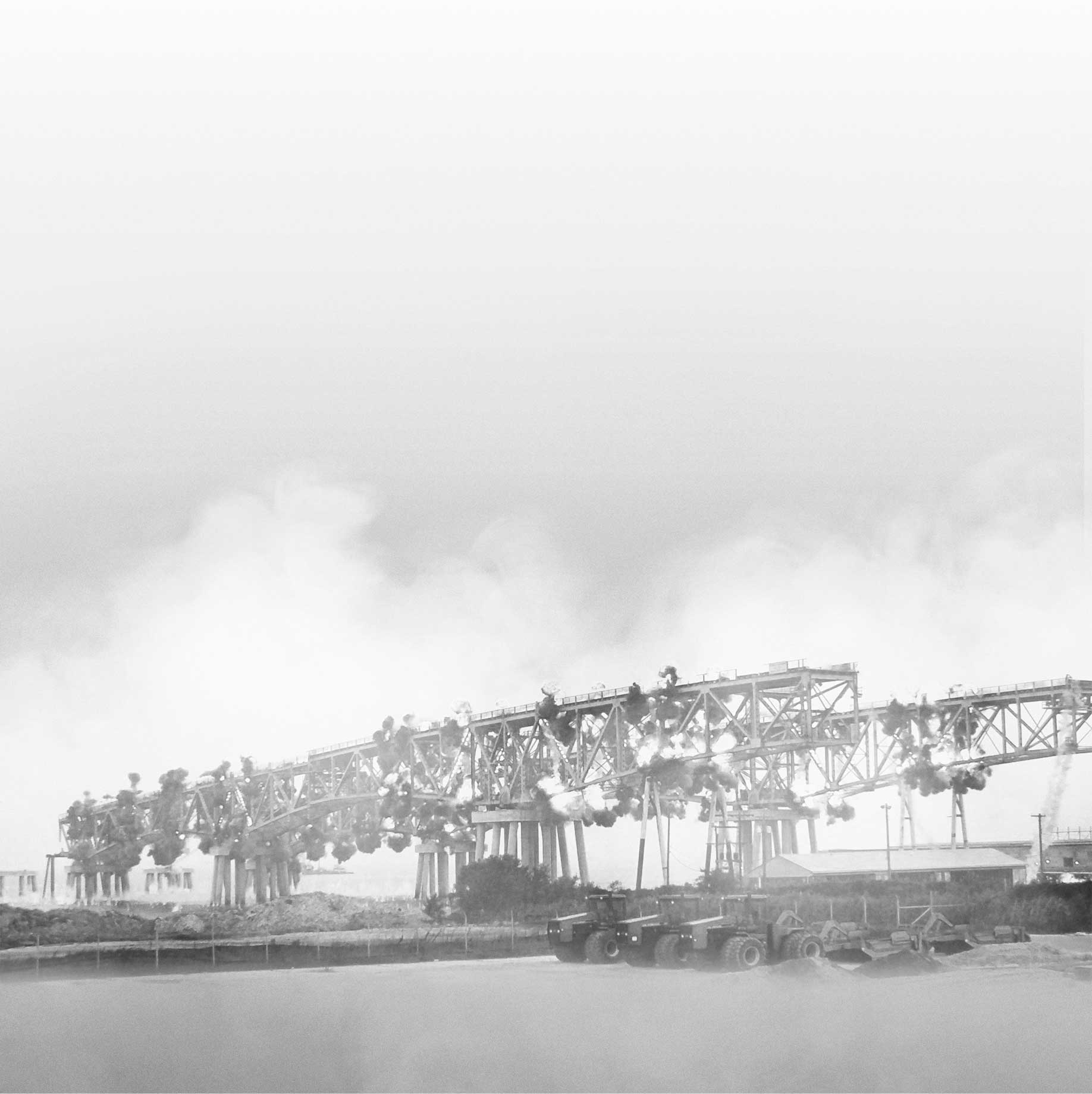Hoyt S. Vandenberg

PROJECT OUTLINE
Reefmakers contacted CDI in the spring of 2009 to assist them with the final deployment of the 524′ long Ex Hoyt S. Vandenberg to the ocean floor off Key West, Florida, to act as an artificial reef to take pressure off the natural reefs in the area. After reviewing Reefmakers’ design for the placement of forty-eight (48) flooding holes, 24 port and 24 starboard, in the hull, below waterline, and torch-cut openings in bulkheads to assist in the symmetrical flooding of the vessel to ensure that it came to rest on its keel. After a review of the vessel at the pier in Norfolk, Virginia, where environmental remediation was being completed, CDI determined that we could design a mounting system for the linear shaped charges and make the required openings with a redundant initiation system to insure the simultaneous initiation of all the charges.
“[CDI is] truly professional and operate a class act. You said from the start you will do whatever it takes to insure this will be a successful event and you surely delivered what you promised.”
Raymond Archer, Port Director, City of Key West, Florida
PROJECT PREPERATION
After the vessel was towed from Norfolk and arrived in Key West, CDI worked with Reefmakers’ subcontractor, Associated Marine Salvage, Inc., to prepare the vessel for the placement of the forty-eight (48) ECAs and the placement of the torch cut ventilation holes in the bulkheads, decks and hull above the waterline.
As the preparation continued below the waterline inside the vessel, CDI and Reefmakers worked together to modify the original sinking plan. These revisions included the removal of eight (8) of the below the water line flooding holes and all of the areas above the waterline, due to safety concerns with the fly of debris and the proximity to support vessels in the area at the time of the event. While working with Associated Marine Salvage, it was found that the ship was bow heavy and would have a tendency to sink by the bow and potentially dive outside of the predetermined resting area. To counter this effect, it was decided to add two (2) additional flooding holes in the bow, one port and one starboard of the vessel on a later delay. In addition to the flooding holes placed in the hull of the vessel flooding holes were created, via propane torches, in the bulkheads between each water tight hold and in the deck floors of the vessel making all the below waterline holds common to ensure even flooding with the vessel landing flat on the ocean floor. While Associated Marine Salvage was responsible for the preparation of the vessel, CDI provided a senior torchman for all rib burning operations directly adjacent to the hull. This ensured that each, individual ECA would fit in the required area and that there was no scarring of the hull.
“Of note in your efforts was the speed and precision with which the detonation and subsequent scuttling was accomplished. There is no doubt in my mind that your organization’s knowledge and professionalism was central to the success of the day. Congratulations on a job well done. I would recommend your team to any State or agency that is considering a reefing evolution. Your success, is a success for the State of Florida and our precious ecosystem. “
Bradley D. Williams, Captain -Florida Fish & Wildlife Conservation Commission, Statewide Special Operations
THE DETONATION
Click HERE to watch the NATIONAL GEOGRAPHIC- Blowdown episode on the sinking of the Hoyt S. Vandenberg .
Once the ship was on station and the weather anchor was in place, CDI installed its redundant non-electric initiation system in the hull joining all forty-two (42) cut points. A non-electric initiation system was used instead of Reefmakers original electric system. To remove the potential dangers of extraneous electricity caused by the numerous marine radio frequencies and the potential for tropical thunderstorms and associated lightning.
On the morning of the sinking, after all nonessential personnel had vacated the ship, two (2) non-electric detonators were attached to the initiation harness in the hull. At 10:21 AM on May 27, 2009, 99.5 Ib of linear shaped charges and 48 Ib of kicker charges comprising the 42 ECAs were detonated in the hull of the Ex-Hoyt S. Vandenberg. The vessel sank to a depth of 140’, perfectly level on its keel inside of the sink zone in a total of two minutes and twenty-two seconds to become the World’s second largest artificial manmade reef in the world.
Within days the area was open to recreational divers while fish and other wildlife began to migrate to the area.
It was truly a pleasure working with CDI. The professionalism, dedication and work ethic of your team were apparent throughout the project evolution. Additionally, your ability to work with the various regulatory and law enforcement entities and revise your work plan as the situation required assisted all of us.”
Jeffrey C. Dey, President and CEO- REEFMAKERS


